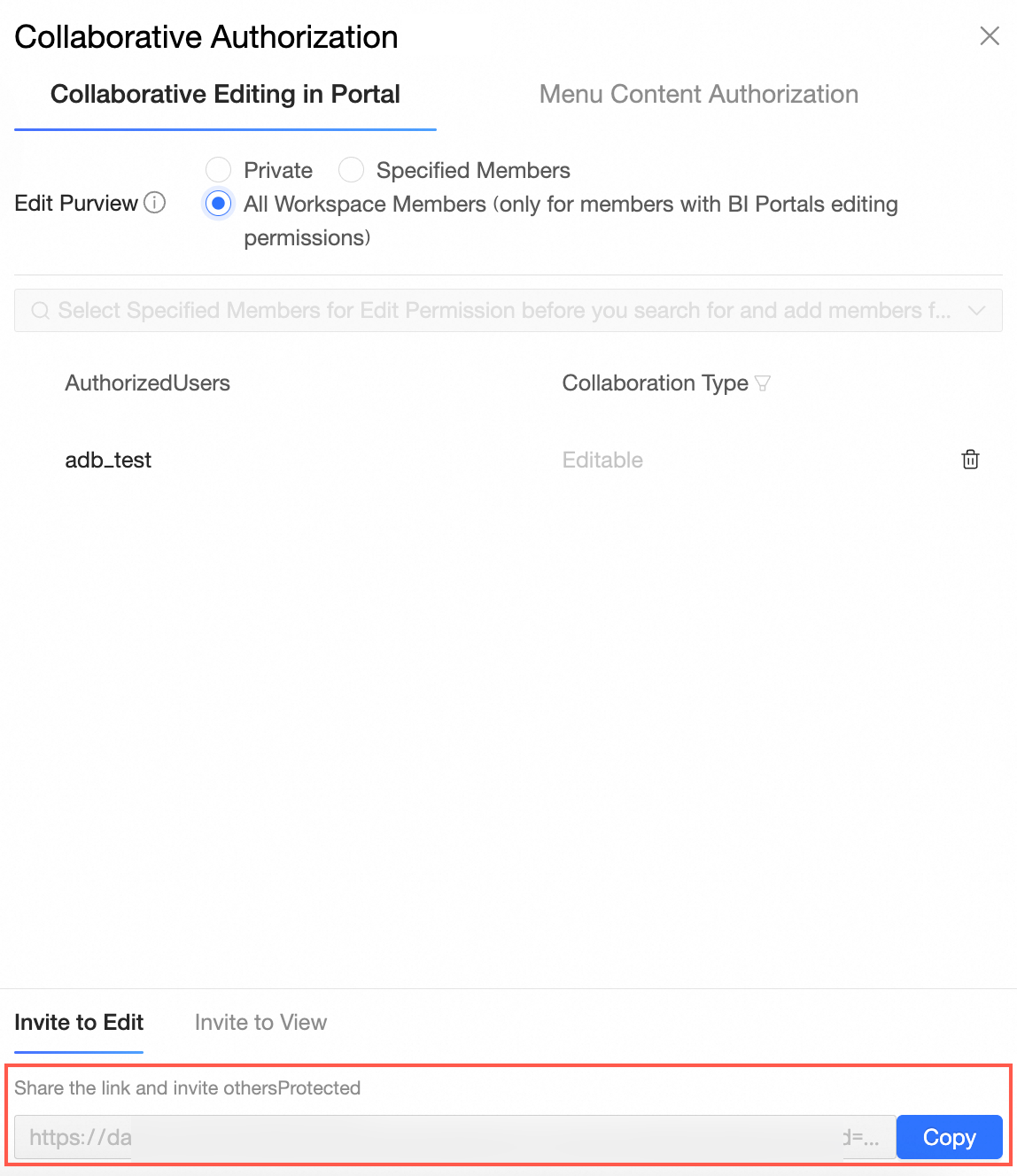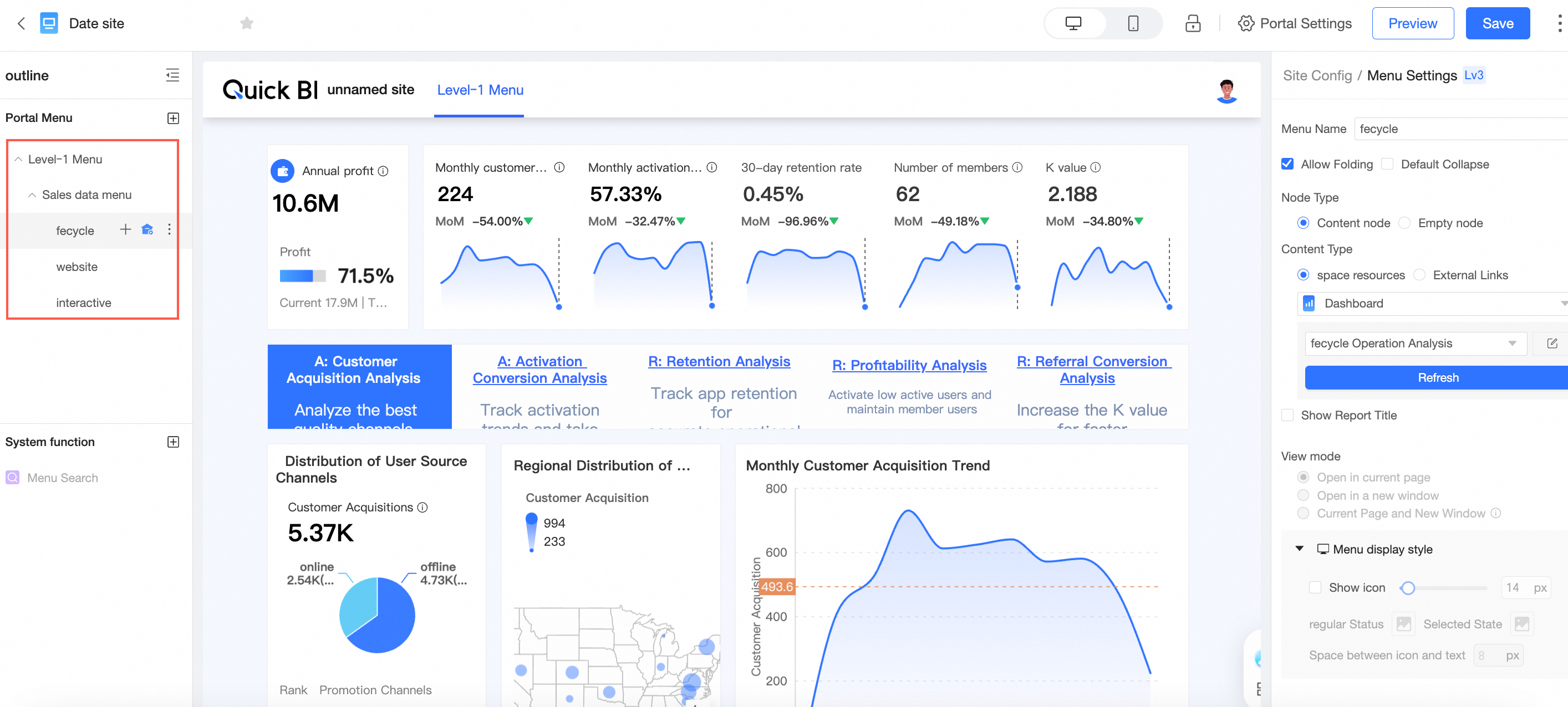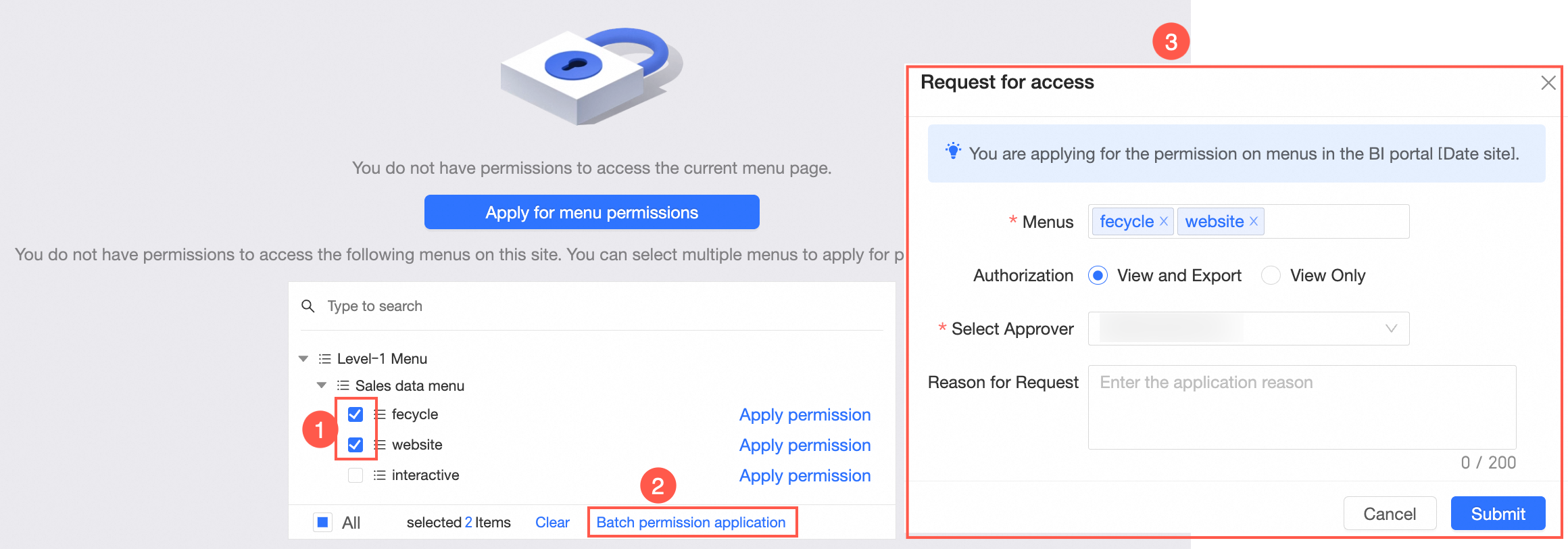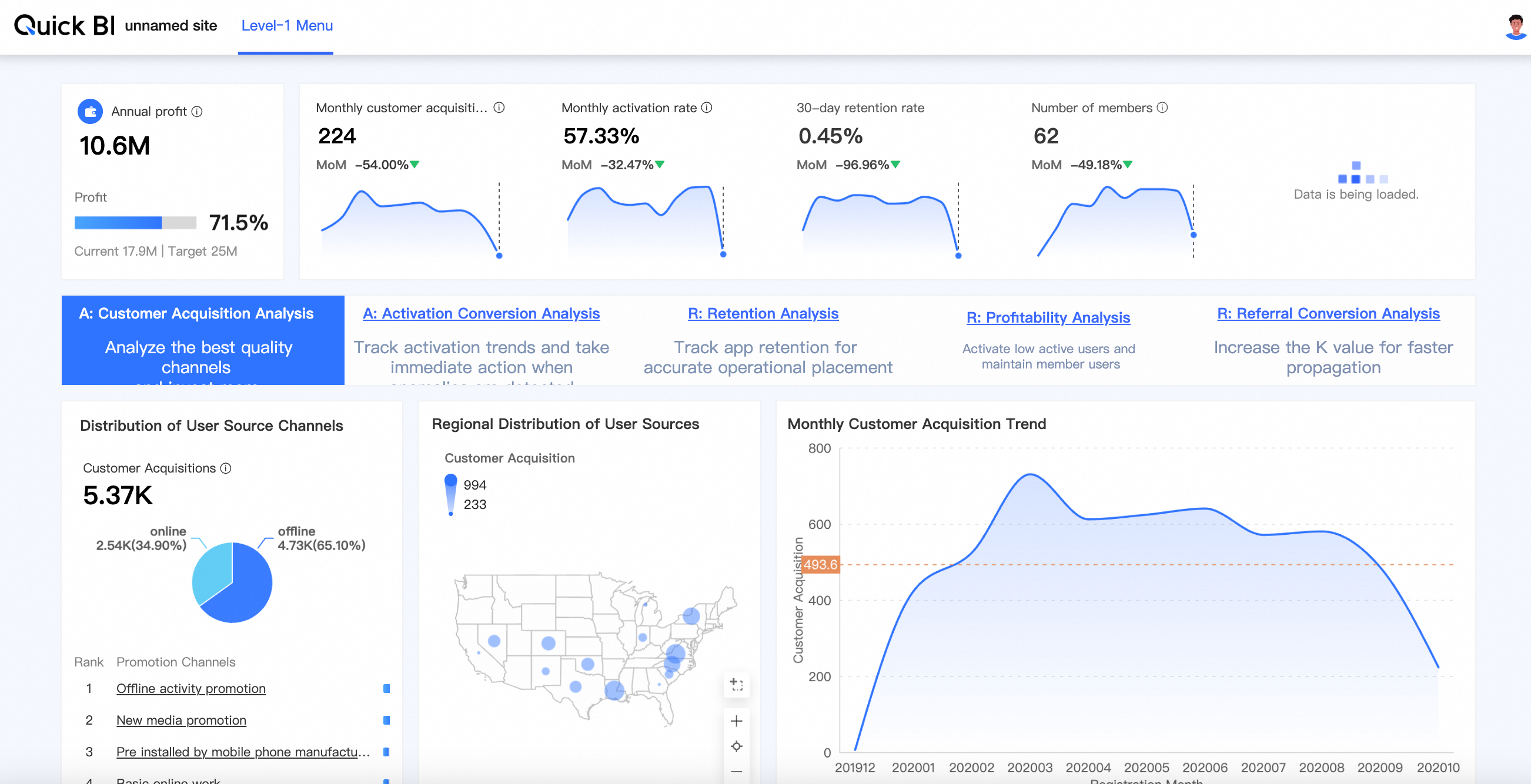This topic describes the process for granting users collaborative operation permissions on BI portals.
Scenarios
Scenario description | Expected outcome |
Upon granting Edit permissions, the authorized user can access and edit the portal. | |
Grant a user permissions to view or export menus or content of a specified BI portal |
|
Procedures
After accessing the Quick BI console, you can set collaborative authorizations for a specified BI portal within the workspace.
Organization administrators, permission administrators, workspace administrators, or BI portal owners can grant users collaborative operation permissions on BI portals.

Grant a user the permissions to edit a specified BI portal
Developers and analysts in the workspace can be granted edit permissions for BI portals only when the Edit Permission Property is set to Specified Members or All Workspace Members. The following steps illustrate how to grant Developer A the edit permissions.
Navigate to the Collaborative Authorization page, under the Portal Collaborative Editing tab, select the edit permission property and grant the permissions.
Below is an example of selecting Edit Permission Property as Specified Members to grant Developer A the edit permissions.

In the Invite To Edit tab, click Copy to share the URL with the authorized user.

Grant a user the permissions to view or export the menus or content of a specified BI portal
On the Collaborative Authorization page, under the Menu Content Authorization tab, select the effective permissions:

Select Menu: Choosing Menu means the permissions are based on the configurations set for the menu.

Select Content: Choosing Content means the permissions are based on the permissions of the reports (dashboards, workbooks, etc.) linked to the BI portal. If the original report has permissions, the menu in this portal will inherit those permissions. No additional permissions are required. For more details, see Grant Users Permissions on Data Works.

Select Compatible: Choosing Compatible combines the permissions of the linked reports with those granted here. If the original report has permissions or permissions are granted here, users can access the menu.
Select the target menu and specify the authorization object.
The image below shows how to select Effective Permissions as Menu to grant Visitor B the permissions to export the BI portal menu.

The visitor can now view and export the corresponding BI portal menu.

You can also adjust Sync settings:

Incremental synchronization: This adds missing permissions without affecting the original permissions of the synchronized resource.
Overwrite synchronization: This removes the original permissions of the synchronized resource and replaces them with the current resource's permissions.
The rule "Hide menu entry for users without permissions" cannot be synchronized.
Hide menu entry for users without permissions
You can enable Hide menu entry for users without permissions based on business needs. For specific effects, refer to Data Portal Permission Request in this topic.

When the parent menu has Hide menu entry for users without permissions selected, it is automatically applied to the child menu and cannot be unselected.
Data Portal Permission Request
If you lack permissions for the BI portal, you can request them.
Select the menu to request permissions.
You can request permissions for an individual menu.

Batch permission requests are also supported.

Within the permission request interface, choose the report resource authorization level-either View and export or View only. Then, Select approver, provide a reason for the application (optional), and click Submit request.
You can check the approval flow details in My Requests.

Once approved, you will have the corresponding permissions for the BI portal.

Your request has already been completed. If you have more content that needs polishing, please provide the new text.


